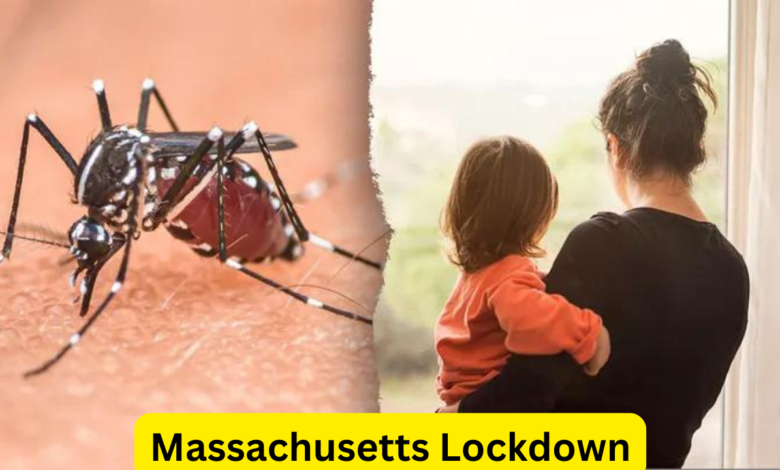Massachusetts Lockdown

In recent weeks, several cities across Massachusetts have enacted voluntary lockdowns in response to a growing threat posed by mosquitoes carrying the Eastern Equine Encephalitis (EEE) virus. This rare but serious viral disease, transmitted through mosquito bites, has led to heightened concerns among residents and health officials alike. As the state grapples with the outbreak, understanding the reasons behind the lockdowns, the areas affected, and the necessary precautions becomes essential.
Understanding the EEE Outbreak in Massachusetts
The Eastern Equine Encephalitis virus, commonly referred to as EEE, is a mosquito-borne illness that can cause severe inflammation of the brain. Although it is relatively rare, the consequences of contracting the virus can be devastating, often leading to long-term neurological issues or even death. Massachusetts has historically been one of the states most affected by EEE, with cases reported sporadically over the years.
In 2024, the virus has re-emerged, with an increase in mosquito populations testing positive for EEE. This has prompted local health departments to take decisive action, including the implementation of voluntary lockdowns in several cities. These measures are designed to reduce the risk of human exposure to the virus, especially during peak mosquito activity periods in the early morning and late evening.
What is EEE and Why is it Dangerous?
EEE is caused by a virus transmitted through the bite of an infected mosquito. The virus can affect both humans and animals, with horses being particularly susceptible. While many people infected with EEE may experience mild symptoms or remain asymptomatic, the virus can lead to severe complications in others. These complications can include high fever, headaches, seizures, and inflammation of the brain (encephalitis).
The mortality rate for EEE in humans is alarmingly high, with approximately 30-50% of cases resulting in death. Survivors of severe EEE infections may suffer from long-term neurological damage, which can include cognitive impairment, paralysis, and personality changes.
Massachusetts’ Response: Voluntary Lockdowns and Precautionary Measures
In response to the increasing number of EEE-positive mosquitoes, several cities in Massachusetts have enforced voluntary lockdowns. These lockdowns are not mandatory, but residents are strongly encouraged to stay indoors during peak mosquito activity times, which typically occur between dusk and dawn. The goal of these lockdowns is to minimize the risk of mosquito bites and, consequently, reduce the spread of the EEE virus.
Cities Enforcing Voluntary Lockdowns
As of now, multiple cities and towns across Massachusetts have implemented these precautionary lockdowns. The affected areas are primarily in regions where mosquito testing has shown a high presence of EEE. Some of the cities currently under voluntary lockdown include:
- Brockton
- Taunton
- New Bedford
- Plymouth
- Wareham
Residents in these areas are advised to take the lockdowns seriously, particularly if they live near bodies of water or in wooded areas, which are common breeding grounds for mosquitoes.
Recommended Precautions for Residents
In addition to adhering to the voluntary lockdowns, residents in affected areas are encouraged to follow several key precautions to protect themselves from mosquito bites:
- Limit Outdoor Activities: Avoid outdoor activities during peak mosquito hours (dusk to dawn). If you must be outside, wear long sleeves, pants, and use insect repellent containing DEET, picaridin, or oil of lemon eucalyptus.
- Secure Your Home: Ensure that all windows and doors are tightly closed and that screens are in good repair to prevent mosquitoes from entering your home.
- Eliminate Standing Water: Mosquitoes lay their eggs in standing water. Regularly check and eliminate standing water in gutters, flowerpots, birdbaths, and other areas around your home.
- Use Mosquito Netting: For added protection, especially in areas where mosquitoes are prevalent, consider using mosquito netting over beds or while sitting outside.
Health Implications and the Importance of Awareness
The resurgence of EEE in Massachusetts serves as a stark reminder of the ongoing threat posed by mosquito-borne illnesses. Public health officials are working diligently to monitor mosquito populations, conduct aerial spraying where necessary, and keep residents informed of the latest developments.
The Role of Public Health Initiatives
Local health departments are playing a crucial role in managing the EEE outbreak. These initiatives include:
- Mosquito Surveillance: Regular testing of mosquito populations to track the presence of EEE and other viruses.
- Public Education: Providing residents with up-to-date information on the risks associated with EEE and the best practices for avoiding mosquito bites.
- Aerial Spraying: In areas with high concentrations of EEE-positive mosquitoes, aerial spraying of insecticides may be conducted to reduce mosquito populations.
The Importance of Community Cooperation
While public health initiatives are vital, the cooperation of residents is equally important in controlling the spread of EEE. By adhering to voluntary lockdowns, taking personal precautions, and staying informed, communities can significantly reduce the risk of EEE transmission.
Looking Ahead: The Future of EEE Management in Massachusetts
As Massachusetts continues to navigate the challenges posed by the EEE outbreak, the importance of ongoing vigilance cannot be overstated. The state has a history of dealing with mosquito-borne illnesses, and the lessons learned from previous outbreaks are being applied to the current situation. However, with climate change and other factors potentially influencing mosquito populations, the fight against EEE is likely to be an ongoing battle.
Potential for Future Outbreaks
Experts warn that as temperatures rise and mosquito habitats expand, the risk of EEE and other mosquito-borne diseases may increase. This underscores the need for sustained public health efforts, continued research into mosquito control, and increased public awareness of the risks associated with these diseases.
Conclusion
The voluntary lockdowns in Massachusetts highlight the seriousness of the current EEE outbreak and the proactive steps being taken to protect public health. While these measures may be inconvenient, they are essential in reducing the risk of exposure to a virus that can have devastating consequences. Residents are urged to remain vigilant, follow the recommended precautions, and stay informed as the situation evolves.




